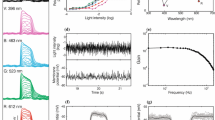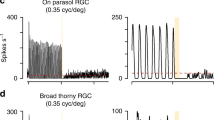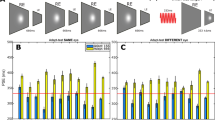Abstract.
Perceived duration can be assessed behaviorally by adjusting the interval between two flashes so that an observer just perceives a certain relation between them. In such studies, the cognitive characteristics of the required relation necessarily interact with the sensory characteristics of the responses evoked by the two flashes. To dissociate the contributions of these two factors, we executed a physiological study which yielded more complete information on the role of each factor in two paradigms which have been used to characterize perceived duration behaviorally, namely the persistence-of-form design and the successive field design. The effect of sensory manipulations have yielded particularly problematic results in these two paradigms because opposite trends were found when intensity was varied. Intracellular recordings were therefore taken from photoreceptor cells exposed to procedural manipulations which match the sensory and cognitive variations employed in behavioral paradigms. The sensory variables of flash intensity, state of adaptation, and flash interval were explored with some completeness. Cognitive factors were assessed in two ways. First, the contribution of the neural site of sensory integration was determined by making a clear distinction between data collected when all stimuli affect the same receptors versus data collected when different stimuli affect different receptors. Second, the consequences of arbitrary choices of candidate code and dependent variable were also explored. When so organized, the physiological data provide a coherent basis for harmonizing apparently contradictory behavioral results because they qualitatively paralleled the behavioral data's complex dependence on intensity and interval. In particular, both direct and inverse dependencies of response duration on intensity exist in both physiology and behavior with the exact nature of the trend depending as much on the cognitive analysis of the neural responses as on their dynamics and energetics. Further, large quantitative differences were found which also were an expression of the different ways in which the two behavioral paradigms affect receptor potentials.
Similar content being viewed by others
Author information
Authors and Affiliations
Additional information
Received: 5 July 2000 / Accepted in revised form: 14 February 2001
Rights and permissions
About this article
Cite this article
Wasserman, G., Nisly-Nagele, S. Dissociating sensory and cognitive contributions to visual persistence II. Photoreceptor integration of flash pairs as a function of interflash interval, intensity, integration site, and candidate code. Biol Cybern 85, 185–194 (2001). https://doi.org/10.1007/s004220100250
Issue Date:
DOI: https://doi.org/10.1007/s004220100250




